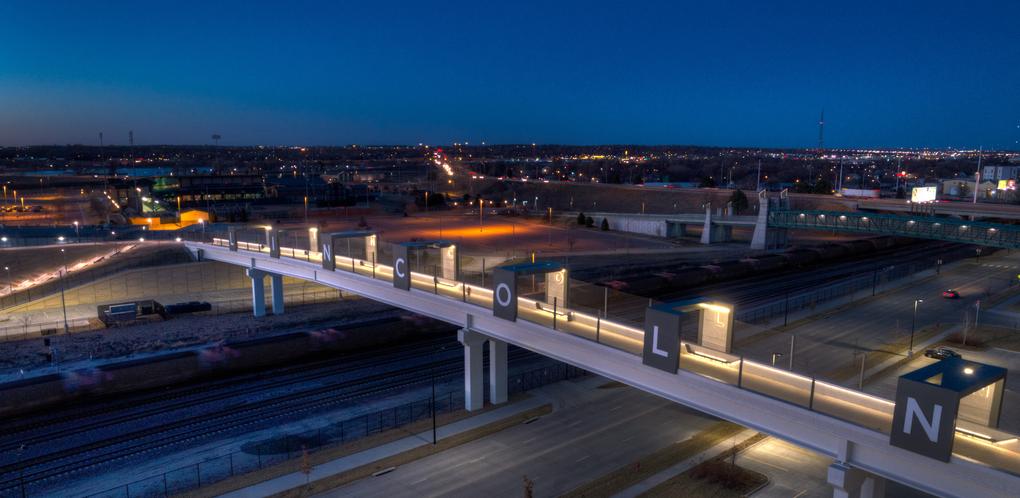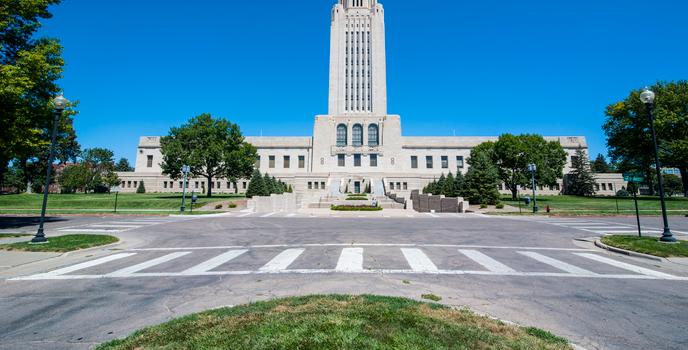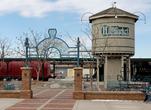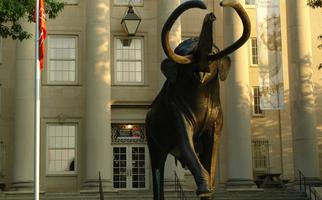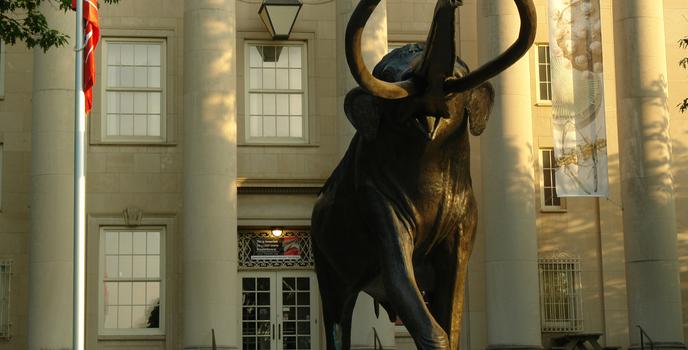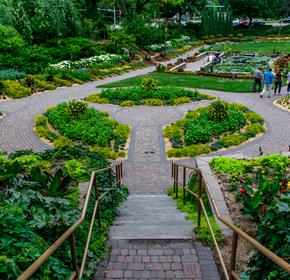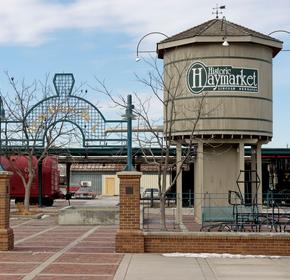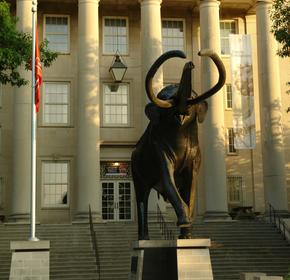1. Nebraska State Capitol: A Landmark Tower
The Nebraska State Capitol in downtown Lincoln was designed by architect Bertram Grosvenor Goodhue in 1920. Constructed in Indiana limestone, the building was completed in 1932. Known as Tower on the Plains due to its 400-foot tower, the capitol building was designated a National Registered Historic Landmark in 1976. The interior features marble columns, vaulted tile ceilings, mosaic floors, and murals symbolizing the Native American and Pioneer history of the state. Take a walk through this fascinating, historic building, which is open to visitors seven days a week.
2. Sunken Gardens: An Annual Showcase
The Sunken Gardens, built by Charles Bartlett Hester in 1930, are named in the National Geographic Guide to Public Gardens as one of the best gardens to visit in North America. The gardens showcase 30,000 annual plants arranged according to a yearly theme. In addition to the Annual Garden, visitors can wander through the majestic Healing Garden replete with white lilies or the experience the Perennial Garden's glorious hostas, viburnum, and hydrangeas. The green space also features two reflecting pools and a waterfall. Renovated in 2005, the gardens house David Young's statue Rebekah at the Well and Dr. Wayne Southwick's statue Reville, which shows the artist's wife and their children at home.
3. Haymarket District: A Historic Commercial Hub
The Haymarket District dates back to 1867, when it was merely an open market for produce and livestock and host to a camping ground for immigrants. Now the renovated Haymarket features restaurants, shops, and nightclubs housed within renovated turn-of-the-century warehouses. The area boasts numerous antique shops, art galleries and brew pubs, which attract visitors all day and night. The district is bordered by Iron Horse Park, which displays the Iron Horse Legacy, a three-dimensional brick mural, as well as a restored steam engine and a 19th-century water tower fountain.
4. Sheldon Museum of Art: A Trove of Artistic Treasures
The Sheldon Museum of Art, built in 1963, houses an impressive collection of 19th- and 20th-century art. Located on the University of Nebraska-Lincoln campus, the museum was designed by architect Philip Johnson and is featured on the U.S. National Register of Historic Places. The gallery showcases more than 12,000 works of art, including a collection of 19th-century landscapes and still life paintings, works of American Impressionism, modernism, geometric abstraction, Abstract Expressionism, and Pop Art. The museum also features a sculpture garden with works by Jacques Lipchitz, Lyman Kipp, Richard Serra, and many more.
5. Museum of American Speed: Racing Through History
Established in 1992 by Bill and Joyce Smith, the Speedway Motors Museum of American Speed displays an impressive collection that explores the history of racing and automotive design. Visitors can enjoy a detailed assortment of early racing vehicles, vintage cars, go-karts, car parts, memorabilia, and even autographed guitars. The museum also showcases legendary car engines, such as specialized Offenhausers and Millers.

